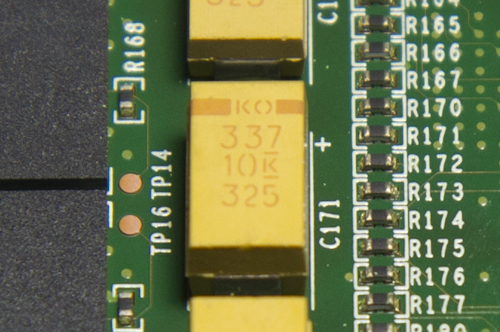SanDisk Optimus Eco SSD: A SAS Interface And Up To 2 TB Of Flash
Consolidation drastically changed the face of enterprise solid-state storage in 2013. One of the bigger moves was SanDisk's acquisition of SMART Storage Systems. Today, we're looking at the first branded SAS-based SSD to come from that purchase.
SanDisk's Guardian Technology, Broken Down
Like many companies with enterprise-oriented offerings, SanDisk has its own suite of features designed to improve write endurance, data integrity, and the drive's overall reliability. The company groups these technologies under the Guardian umbrella. Individually, they're called FlashGuard, DataGuard, and EverGuard.
FlashGuard
Typical MLC-based SSDs, especially those with sub-20 nm flash like SanDisk's Optimus Eco, you can typically expect endurance rated at less than one complete drive write per day. That's more than enough for most read-intensive environments, but not nearly what you'd want in a taxing write-heavy application. Unfortunately, as manufacturing technology advances, the only way to maintain high-end endurance at the NAND level is paying more for specially-binned eMLC or SLC memory.
SMART, prior to getting purchased by SanDisk, spent years characterizing the behavior of MLC flash and thinks it has the answer. During NAND validation (in this case, 19 nm MLC), data is collected and parameters are calculated to facilitate maximum write endurance per cell. Signal processing is then used to modify those parameters based on the actual performance of each drive once it's in the field.
SanDisk also knows that write endurance varies. Instead of treating every cell as identical, it modifies its wear-leveling algorithm so that stronger cells are exposed to more writes than weaker ones.
The combination of these discoveries and features is why SanDisk is confident its Optimus Eco can withstand three to seven DWPD over the course of its five-year warranty without experiencing write exhaustion.
DataGuard
Also like most other enterprise-class products, the Optimus Eco has a fairly substantial list of reliability-oriented capabilities. It claims to feature improved error detection and correction algorithms to ensure data integrity. SanDisk also offers its F.R.A.M.E. (Flexible Redundant Array of Memory Elements) technology, which allows for cross-die redundancy to safeguard against page or block failure.
EverGuard
As we saw from our photo tour of the Optimus Eco's PCB, the drive employs a number of poly tantalum capacitors to protect against untimely data loss. SanDisk calls this EverGuard. Again, if there is information in flight when the power goes out, the caps provide just enough juice to commit data to memory so that nothing is lost.
Get Tom's Hardware's best news and in-depth reviews, straight to your inbox.
Current page: SanDisk's Guardian Technology, Broken Down
Prev Page Under The Hood Of SanDisk's Optimus Eco Next Page Testing SanDisk's Optimus Eco